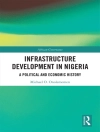Examining major terrorist acts and campaigns undertaken in the decade following September 11, 2001, internationally recognized scholars study the involvement of global terrorist leaders and organizations in these incidents and the planning, organization, execution, recruitment, and training that went into them. Their work captures the changing character of al-Qaeda and its affiliates since the invasions of Afghanistan and Iraq and the sophisticated elements that, despite the West’s best counterterrorism efforts, continue to exert substantial direction over jihadist terrorist operations.
Through case studies of terrorist acts and offensives occurring both in and outside the West, the volume’s contributors investigate al-Qaeda and other related entities as they adapted to the strategies of Operation Enduring Freedom and subsequent U.S.-led global counterterrorism programs. They explore whether Osama bin Laden was indeed reduced to a mere figurehead before his death or continued to influence al-Qaeda’s global activities. Did al-Qaeda become a loose collection of individuals and ideas following its expulsion from Afghanistan, or was it reborn as a transnational terrorist structure powered by a well-articulated ideology? What is the preeminent terrorist threat we face today, and what will it look like in the future? This anthology pinpoints the critical patterns and strategies that will inform counterterrorism in the coming decades.
Table of Content
Introduction, by Bruce Hoffman and Fernando Reinares
Part I. In the West
1. The Evolution of the Post-9/11 Threat to the U.S. Homeland, by Lorenzo Vidino
2. The 2004 Madrid Train Bombings, by Fernando Reinares
3. Operation Crevice in London, by Peter R. Neumann and Ryan Evans
4. Dhiren Barot and Operation Rhyme, by Lindsay Clutterbuck
5. The Van Gogh Murder and Beyond, by Beatrice de Graaf
6. Leadership and the Toronto 18, by Stewart Bell
7. Operation Pendennis in Australia, by Sally Neighbour
8. The 7 July 2005 London Bombings, by Bruce Hoffman
9. The 2006 Airline Plot, by Paul Cruickshank
10. The Foiled Attacks in Italy in 2006, by Javier Jordán
11. The German ‘Sauerland’ Plot, Central Asia, and Turkey, by Guido Steinberg
12. The Danish Glasvej Case, by Michael Taarnby
13. The January 2008 Suicide Bomb Plot in Barcelona, by Fernando Reinares
14. Ansar al-Fatah and ‘Iraqi’ Networks in France, by Jean-Pierre Filiu
Part II. Outside the West
15. Al-Qaeda Terrorism in Afghanistan, by Seth G. Jones
16. Attacks of al-Jemaah al-Islamiyah in Southeast Asia, by Rohan Gunaratna
17. The Mombassa Attacks of November 28, 2002, by Jonathan Fighel
18. The Origins of Sectarian Terrorism in Iraq, by Mohammed M. Hafez
19. The November 2003 Istanbul Bombings, by Guido Steinberg and Philipp Holtmann
20. The Sinai Terrorist Attacks, by Holly L. Mc Carthy and Ami Pedahzur
21. Comparing the 2003 and 2007 Incidents in Casablanca, by Jack Kalpakian
22. The 2007 Suicide Attacks in Algiers, by Anneli Botha
23. The 2003 Riyadh and 2008 Sanaa Bombings, by Thomas Hegghammer
24. The 2008 Mumbai Attack, by C. Christine Fair
25. The 2010 Suicide Attacks in Kampala, by Anneli Botha
Conclusion, by Bruce Hoffman and Fernando Reinares
List of Contributors
Index
About the author
Bruce Hoffman is a professor at Georgetown University’s Walsh School of Foreign Service and the director of its Center for Security Studies and its Security Studies Program, as well as a senior fellow at the U.S. Military Academy’s Combating Terrorism Center. He is also the author of Inside Terrorism (Columbia, 1998), now in its third edition.Fernando Reinares is a professor of political science and security studies at Universidad Rey Juan Carlos and a director of the Program on Global Terrorism at Elcano Royal Institute in Madrid, Spain. He is also an adjunct professor at Georgetown University and the author of Al-Qaeda’s Revenge: The 2004 Madrid Train Bombings (Columbia, 2016).












